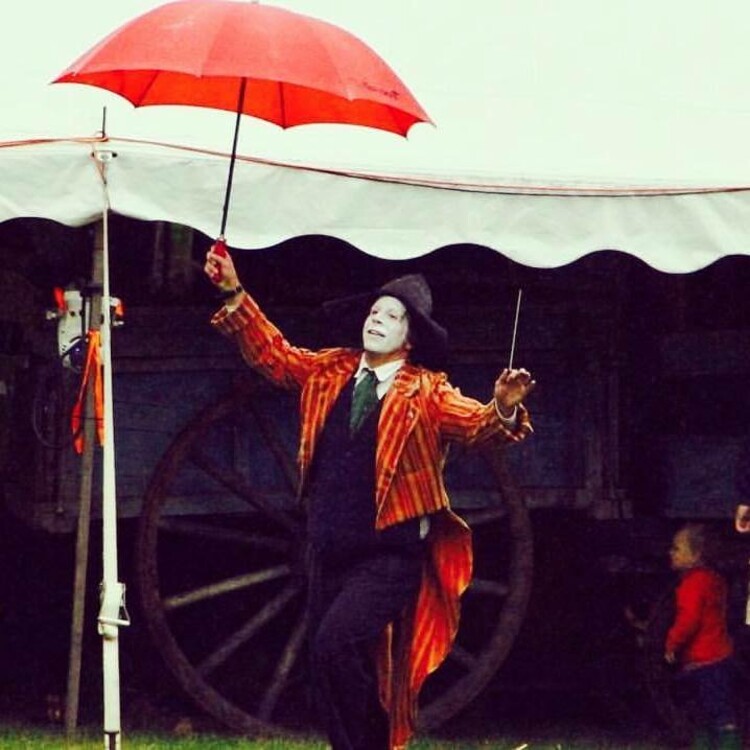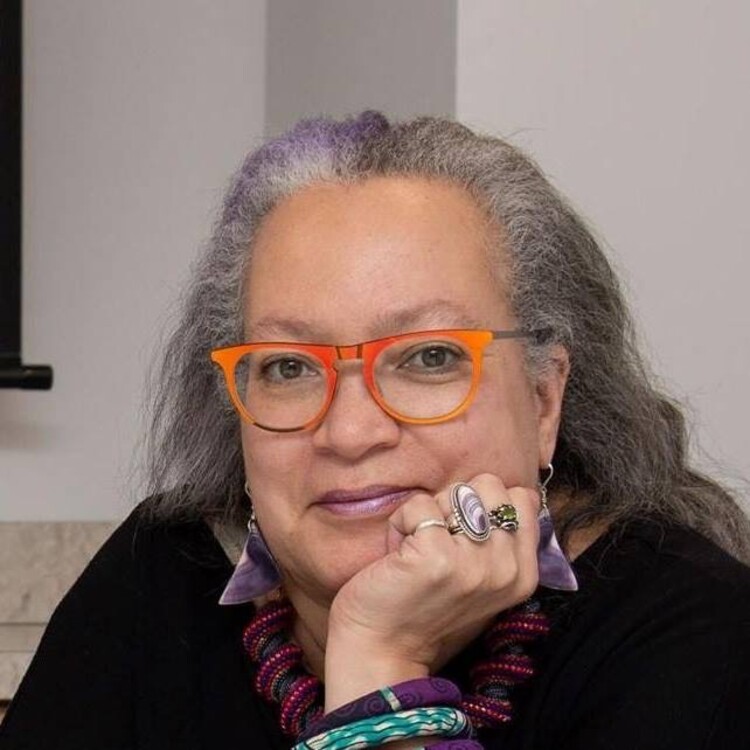Growing a Living Culture
I was a young father living in Boston over a barbershop called Jumbo’s. I was a full-time substitute teacher at an elementary school by day and a fancy waiter by night. I moonlit as a playwright, determined not to be a starving artist/deadbeat dad to my son who lived with his mother a hemisphere away. I hadn’t realized it, but in eliminating starving, I was crossing out being an artist. My college mentor perceived that I was not claiming being an artist and suggested I visit Double Edge’s Farm. It sounded like a kibbutz. I didn’t go.
Many months and phone calls from my professor later, I went to check out the farm. It was not what I expected. People weren’t living communally. They were eclectic, diverse. There was a refreshing vibe to this farm/theater/laboratory/center that was both pragmatic and visionary. I have been here since that time.
Like me, Double Edge had been in Boston, creating original work beginning in 1982 until 1994 when they moved to a former farm in Ashfield, MA. The farm was dispossessed—forgotten, dilapidated, and in ruins, like so many farms around here. This had been, at one time, a flourishing agricultural community with over thirty family farms. Two other farms remain from that time. They are our neighbors.
Today, the hay barn is our main space for creating and presenting performances. The animal barn is our secondary multifunctional space for training, rehearsal, and gatherings. The cow stalls were renovated into dressing rooms; the milking parlor became our office. Our bookkeeper works where the chickens were once slaughtered. And so on.
Over time, the outdoors has been turned into an expansive performance landscape for our site-specific summer spectacle. Giant canvases, mosaics, sculptures, monuments, sails, and other art works created by local artists live on as permanent installations.
As an artist in a devising ensemble, this rural environment provides special conditions for a particular sort of artistic evolution. Process in this place—not to be rendered merely as pastoral or quaint—has made me sensitive to growth.
Double Edge is committed to a long-term approach to devising work. We subscribe to individualized, empirical, Talmudic research of the actor/artist. To our students, we embolden a self-exploration from the pages of Rilke. It is also rooted in concrete and practical experimentation and research. Ours is a slow, ongoing, and rigorous work—like that of a farmer. The aesthetic and practical research is not specialized but multidisciplinary. We spend multiple years researching and developing each piece and multiple years of continued development in touring repertory.
The development of the group is its own unique journey/creation. We co-create the work and the sustainability over a course of years. In turn, collaboration and interdependence deeply inform the culture of living that surrounds the work—a living culture of the ensemble and ultimately of the local community in which we live.
For many years though, there was a deep mistrust between the local community and Double Edge. We were toxic in the eyes of our community. At first, they feared the farm would be erased and its land would be developed. Then there were the suspicions of the theater being a cult or some sort of commune posing as a theater. And the ensemble remained suspiciously insular, uninterested, solely focused on the work in the space. They remained inside the hay-barn/theater rehearsing and working and never performing. The community asked, what sort of theater worked for so long and didn’t present performances? And they drew their own conclusions.
Mutuality came over time when farmers to whom we lent our land came within viewing distance—not of our work, but of our way of working. They saw the artists slowly bringing the dilapidated barns and gardens back to live. They witnessed diligence, self-reliance, and reverence for the land and resources. From the recognition of a shared ethos grew interdependence.
When we began our site-specific spectacles in the fields, pond, and in the air, the rural community’s curiosity yielded to excitement and then to collaboration. Today, after many years, each performance night, a farmer checks a special weather radar used for predicting crops to help us determine when to perform in the face of oncoming thunderstorms. A sheep farm donates wool to an installation artist to create giant wool sails. A mason lays concrete for mosaic. A contractor grounds the outdoor set pieces from electricity. An excavator uses giant equipment to move our larger-than-life creations. Stonemasons create stone sculptures for performances and community spaces. A landscaper designs performance gardens. The carpenter renovates performance roofs. A baker contributes unsold bread and pastries. The dentist provides free dentistry. The theater provides culture and the example that is anything is possible.
The ghosts of family farms remain present here. The government-endorsed model for agricultural production and monoculture that emerged in the 70s that ordered farms to “get big or get out” led to near extinction of family farms, that culture, and way of life. Double Edge inhabits this space, this history where autonomy was lost with the massive expansion of industrialized agriculture. Today, the smaller family farms are re-emerging. Our community has access to the fragility of survival, the need for collaboration, and creativity in relation to resources. The shared ownership between spectators and creators, community and artists, has led to a symbiosis which allows us to hold a paradox; to go deeply inside and an engage deeply outside.
It is clear to us all that in the theater ecology, the same questions are being asked. Emerging and professional artists are gravitating toward the challenges and fulfillments in devising work, collaboration, and the group experience, and wondering in what direction lies virtuous survival. Audiences are craving a palpable engagement as spectators and members of a community. Regional theaters are measuring the risks and benefits of collaboration with ensembles and alternative modes of production. There is a question about evolution in our theater ecology.
At the recent TCG conference, a young ensemble director asked: what is the process of getting one’s ensemble to the point of developing collaborative relationships with larger regional theaters? One panelist offered straightforward advice: invest all into having a successful run of a show in New York City.
I would argue for success determined by virtuous, sustainable growth instead of expediency or conquest. The rural context has taught me something about conditions for growth and to privilege this question: how do we coalesce essential artistic autonomy with survival in a way unique to the group and its community (however it defines it)? This work has taught me that resilience, as an artist, is evolutionary and as important as talent.
In the coming months, Double Edge will be in residency in different urban communities (Chicago and Baltimore) to develop our newest indoor performance, The Grand Parade of the 20th Century, before premiering it at Arena Stage—thanks to NEFA’s National Theater Pilot (which is itself engaging in the question above). In addition to the creative autonomy this grant provides to the artist and support for presenting partners, for us, this support is enabling a step in our search for symbiosis in the national theater ecology. Where current modes of production and ethos limit the possibility to experiment with audience engagement, to affect institutional change, or to reimagine the potential of the community, this project is our opportunity and attempt to bring the research we conduct at the Farm to these communities, to seek a quality of connection such as that we discovered in our rural home.



Comments
The article is just the start of the conversation—we want to know what you think about this subject, too! HowlRound is a space for knowledge-sharing, and we welcome spirited, thoughtful, and on-topic dialogue. Find our full comments policy here
Thanks for your thoughtful sharing
"...what is the process of getting one’s ensemble to the point of
developing collaborative relationships with larger regional theaters?" What if the question were: what is the process of becoming food for a community that likely doesn't even know how hungry it is for creativity, play and physical engagement in its environment? Once you figure that out the regional theatres will/will not come to you seeking the recipe; most of them need it.
Over the years, I have seen Double Edge take root and grow in its rural region. I think it's great that you have become neighbors with your neighbors. And you're now visiting urban theatres and exploring your work there because you have a real home to go home to at the end of that particular journey. Thanks to NEFA and those urban theatres for recognizing that and nurturing your development. And thanks to your neighbors. It's a relationship. It evolves. And it requires, as you say, resilience.
Slow Theater - sustainable and healthy! I love it. Marvelous work Matthew. Double Edge is a mythopoetic megaphone much needed in the world. Gratefully...
Beautiful piece. Thoughtful, honest and much needed.
Thanks Daniel. I appreciate you taking the time to read it and for warm words.
Big sigh of satisfaction.
Thank you, Matthew (and other Double Edgers)!
Inspiring